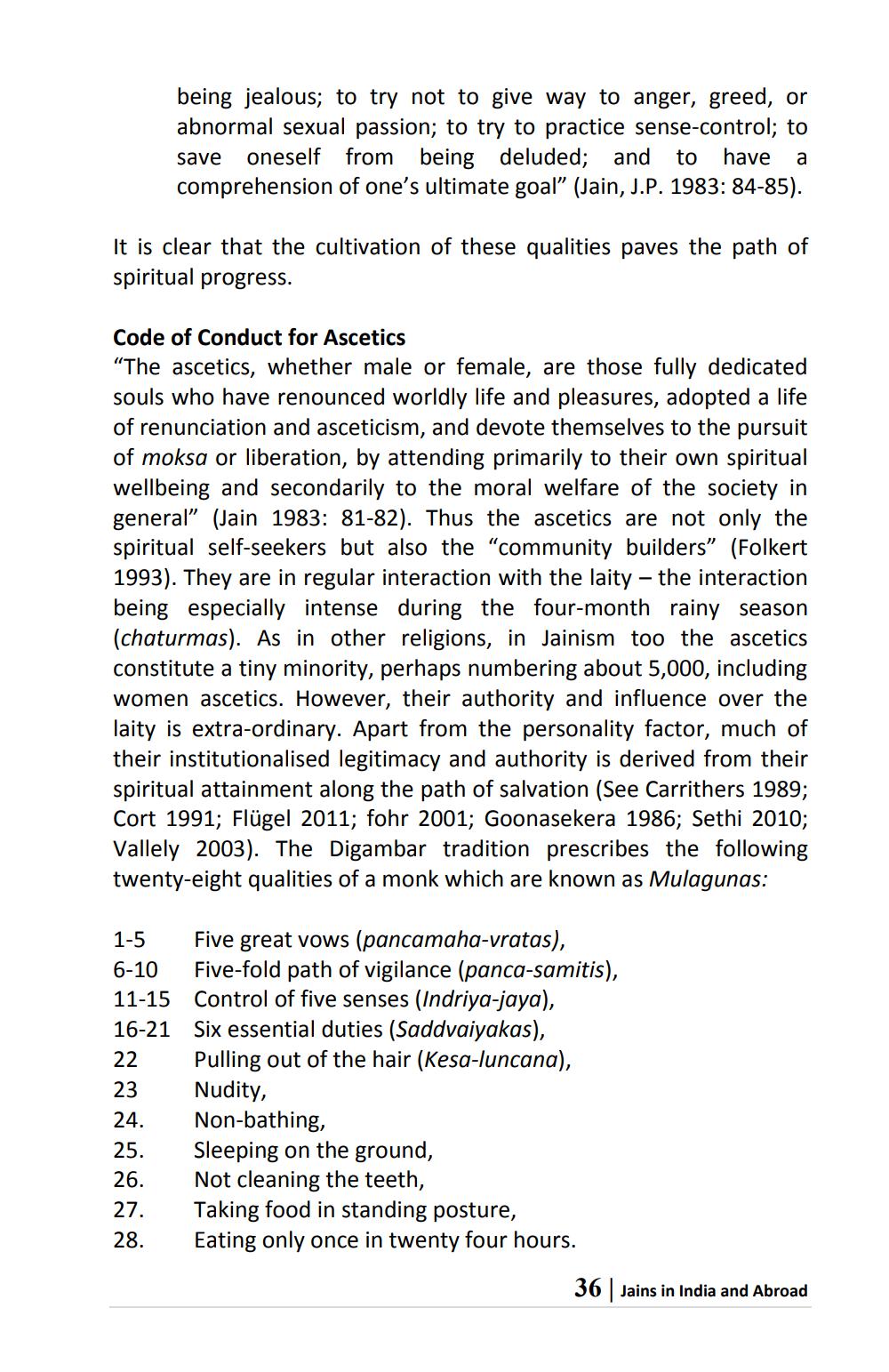________________
being jealous; to try not to give way to anger, greed, or abnormal sexual passion; to try to practice sense-control; to save oneself from being deluded; and to have a comprehension of one's ultimate goal” (Jain, J.P. 1983: 84-85).
It is clear that the cultivation of these qualities paves the path of spiritual progress.
Code of Conduct for Ascetics "The ascetics, whether male or female, are those fully dedicated souls who have renounced worldly life and pleasures, adopted a life of renunciation and asceticism, and devote themselves to the pursuit of moksa or liberation, by attending primarily to their own spiritual wellbeing and secondarily to the moral welfare of the society in general” (Jain 1983: 81-82). Thus the ascetics are not only the spiritual self-seekers but also the "community builders” (Folkert 1993). They are in regular interaction with the laity - the interaction being especially intense during the four-month rainy season (chaturmas). As in other religions, in Jainism too the ascetics constitute a tiny minority, perhaps numbering about 5,000, including women ascetics. However, their authority and influence over the laity is extra-ordinary. Apart from the personality factor, much of their institutionalised legitimacy and authority is derived from their spiritual attainment along the path of salvation (See Carrithers 1989; Cort 1991; Flügel 2011; fohr 2001; Goonasekera 1986; Sethi 2010; Vallely 2003). The Digambar tradition prescribes the following twenty-eight qualities of a monk which are known as Mulagunas:
22
1-5 Five great vows (pancamaha-vratas), 6-10 Five-fold path of vigilance (panca-samitis), 11-15 Control of five senses (Indriya-jaya), 16-21 Six essential duties (Saddvaiyakas),
Pulling out of the hair (Kesa-luncana), 23 Nudity, 24. Non-bathing,
Sleeping on the ground, 26. Not cleaning the teeth, 27. Taking food in standing posture, 28. Eating only once in twenty four hours.
25.
Jains in India and Abroad




